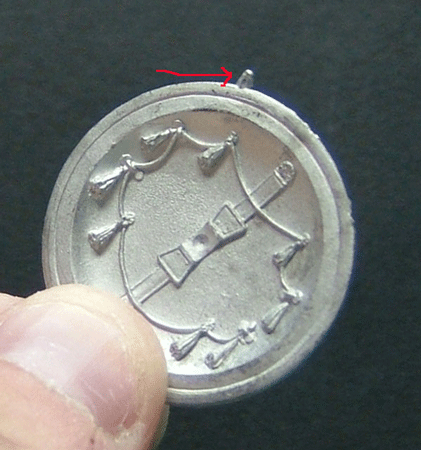Preparing a white metal figure for painting
by Stephen Mallia
We often read and see articles on how to paint figures, being it in oils, acrylics or Humbrol enamels. These are more often than not broken down to focus on particular areas, like painting faces, eyes or even different textures. Whilst all of this is all very well, especially for those starting out in the hobby, in my opinion the actual preparation of the figure for painting is often overlooked by magazines and other media. We have to keep in mind that people trying out their hand at painting figures for the first time may feel at a loss from where to start.
So how do you prepare that figure for the actual painting? In this article we’re going to tackle this subject: the preparation of metal figures.
First and foremost, let’s make it clear that no matter how good the figure is, there will always be casting lines. So look for them and eliminate them. But let’s go one step at a time.

The kit parts
On opening the box you should examine the figure thoroughly. Occasionally some damage is present or even missing parts, although this does not happen that often. The most prominent manufacturers can present us with the most seemingly flawless figure, but the casting process always leaves some hint of mould lines that need to be removed. The finer these casting lines, the easier they are to be eliminated. Here are a few pictures showing some examples of casting lines. These I consider to be minor compared to some and you will not need putty.

Example of casting lines

Example of casting line


Example of excess flash line
The next photo shows what I use for the cleaning process. You will notice an assortment of needle files, abrasive paper and fine steel wool.

Tools used in the process
I start off by using the needle files, the most common being the rounded ones. You will need to apply pressure depending on the thickness of the casting line. The finer the seam lines are, the lighter the touch with a down-to-up motion.

Bad casting line
On good castings, this first step can be enough but on other less efficient castings, you may need to use abrasive paper. If so, start with a coarse one and finish with a fine one.
Occasionally these steps will not be sufficient and putty will be needed. This should be used to ‘bridge’ the deficiency, smoothened with alcohol (Isopropyl), then sanded once dry.

Removing excess flash with side cutters

Using needle file to remove casting line
You may also find casting lines in awkward places like mail or surface detail. In this case, a sharp pointed Xacto knife might come in handy and the seam lines removed, trying not to damage the detail. If this happens, the detail might need to be re-sculpted.

Part after treatment with needle file

Red arrow shows casting line treated; black arrow shows the still untreated area
All excess flash can be removed in the same manner. After careful examination to see if there are still any faults, the steel wool comes into play. Give all the parts a good rub and usually this will show if you have missed a spot, in which case you need to repeat the procedure.

Part after rub with steelwool
Pinning the feet comes next. This will help in having the figure secured safely to the base/groundwork after painting is complete. I usually use paperclip wire for this but any sturdy wire will do. Probably I only use it because it’s cheaper! Drill a hole at the bottom of the feet deep enough to go past the ankles.

Hole drilled in feet
If the hole is a little larger in diameter than the wire you’re using, all the better. To attach the wire to the feet I use two-part epoxy glue which bonds much stronger than superglue.

Paperclip wire
I leave it to set for a few hours to make sure it’s really dry even though I use the 5-minute type. Now the figure is ready for a good wash with (liquid) soap and water to await the primer stage.

Paperclip wire attached to feet
I have used many different primers, namely car primers applied by airbrush or spray can. More recently I found Citadel’s Skull White (in spray can) to be very suitable. A light spray from about a foot distance will make sure that you do not have a build-up of paint in any of the fine detail. Don’t keep the spray can still while spraying. This will build up paint in all the detail. One thing to mention is that I use this method on metal figures where there is no armour plate. On medieval figures, for example, where there is plate or mail armour, I use a different method. But that would be a different topic worth an article of its own.
I hope that this little article encourages people into dabbing their hand at painting figures. This is a wonderful hobby and more should give it a try.
Copyright © El Greco Miniatures, 2006-2020

